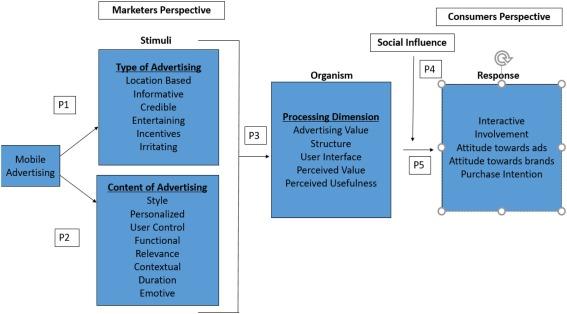Top Challenges in Achieving Educational Equity: Barriers and Solutions Revealed
Educational equity is more than just a buzzword—it’s a crucial goal for creating inclusive, high-quality learning environments for every student. Yet, many schools and educational systems face persistent challenges in offering equitable opportunities. In this comprehensive guide, we reveal the top barriers to educational equity and present actionable solutions to foster fairness and inclusion in education.
Understanding Educational Equity
At its core, educational equity means providing fair access to resources, instruction, and opportunities, regardless of a student’s background, socioeconomic status, race, gender, or ability. It acknowledges that different learners need varying degrees of support to achieve similar academic and personal outcomes. By focusing on equity in education, communities lay the groundwork for lifelong success and social justice.
Top Challenges in Achieving Educational Equity
Despite its importance, achieving educational equity presents several complex obstacles. Here’s a closer look at the most pressing barriers:
1. Socioeconomic Disparities
- Resource Gaps: Low-income schools frequently enough have less funding for qualified teachers, infrastructure, and technology.
- Access to Enrichment: Students in underprivileged communities may lack exposure to extracurricular activities,STEM programs,and advanced courses.
2. Racial and Ethnic Inequality
- Implicit Bias: Teachers and administrators may unconsciously lower expectations for students of color.
- disproportionate Discipline: Students of certain races often face harsher disciplinary actions,contributing to the “school-to-prison pipeline.”
3. Linguistic Barriers
- English language Learners (ELL): Lack of adequate support for ELL students can hinder comprehension and participation.
- Culturally Relevant Curriculum: Teaching materials may not reflect students’ diverse backgrounds,limiting engagement.
4. Disabilities and Special Needs
- Accessibility Issues: Inadequate support services and accommodations can marginalize students wiht disabilities.
- Stigma: Negative attitudes toward special needs students effect inclusion and academic progress.
5. Digital Divide
- Insufficient Technology: Many families lack access to reliable internet and devices for remote learning.
- Tech Skills Gap: Teachers and students in low-resource schools frequently enough have limited exposure to educational technology.
6. Parental and Community Engagement
- Language and Cultural Barriers: Families from diverse backgrounds may feel excluded from school decision-making processes.
- Lack of Support: Some communities struggle to provide adequate social, emotional, and academic support outside school.
Impact of Educational Inequity
Educational inequity doesn’t just harm individual students—it undermines entire communities and society at large. Children in underserved populations face lower graduation rates, limited career opportunities, and increased economic hardship. Society, in turn, loses out on talented and innovative future leaders.
Case Studies: Barriers in Action
Let’s explore two real-world examples highlighting the impact of these barriers:
-
Case Study 1: The Urban-Rural Divide
In many rural communities, lack of transportation, internet connectivity, and qualified educators creates unequal access to basic education compared to urban peers.For instance, during the COVID-19 pandemic, remote learning was virtually unachievable for thousands of rural students.
-
Case Study 2: Minority Students in Large Cities
Students from minority backgrounds in major cities are often subject to overcrowded classrooms and underfunded schools. Despite programs like Title I funding, gaps in achievement persist, partly due to systemic bias and funding formulas linked to local property taxes.
Benefits of Achieving Educational Equity
Overcoming these barriers leads to transformative benefits for students and society:
- Improved Academic Outcomes: Equitable access promotes higher graduation rates and test scores.
- greater Social Cohesion: Inclusive schools help bridge cultural and racial divides, fostering empathy and civic engagement.
- Economic Mobility: Education equity breaks cycles of poverty,allowing students from all backgrounds to thrive.
Practical Solutions for Educational Equity
Though the challenges are considerable, educators, policymakers, and communities can make meaningful progress with targeted strategies:
1. Resource Reallocation
- Advocate for weighted funding systems that prioritize schools serving high-need students.
- Invest in facilities, technology, and qualified educators for low-income areas.
2. Culturally Responsive Teaching
- Encourage teachers to integrate diverse perspectives and histories into the curriculum.
- Promote professional advancement on cultural competency and anti-bias education.
3. Strengthening Support Services
- Increase access to counseling, special education, and language assistance programs.
- Foster partnerships with mental health providers and social service agencies.
4.Bridging the Digital Divide
- Implement device loan programs and subsidized internet access for students in need.
- Train teachers and students in digital literacy and online safety.
5. Parental Engagement Initiatives
- Offer multilingual interaction and culturally relevant outreach to families.
- Provide parent workshops and increase family involvement in school governance.
Tips for Educators and Parents
Whether you’re a teacher or a caregiver,small changes can make a meaningful impact:
- Build relationships: Take time to learn each student’s unique strengths and challenges.
- Set High Expectations: Believe in every child’s ability to succeed, regardless of background.
- Advocate for Equity: Speak up for inclusive policies and fair allocation of resources.
First-Hand Perspective: Voices from the Classroom
“When my school began offering dual-language programs and hired more bilingual staff, my parents finally felt cozy attending meetings and helping with my homework. it completely changed my experience and made me feel like I belonged.”
— Ana, 10th grade student
Conclusion: Towards Inclusive, Equitable Education
Achieving educational equity remains one of the most critical and challenging goals facing schools today. By recognizing the barriers—from socioeconomic inequality to digital divides—and implementing thoughtful solutions, we can create learning environments where every student thrives. Whether you’re an educator, policymaker, or parent, your engagement is essential. Together, we can pave the way for a more just and inclusive educational system that prepares all learners for success in a diverse and interconnected world.

